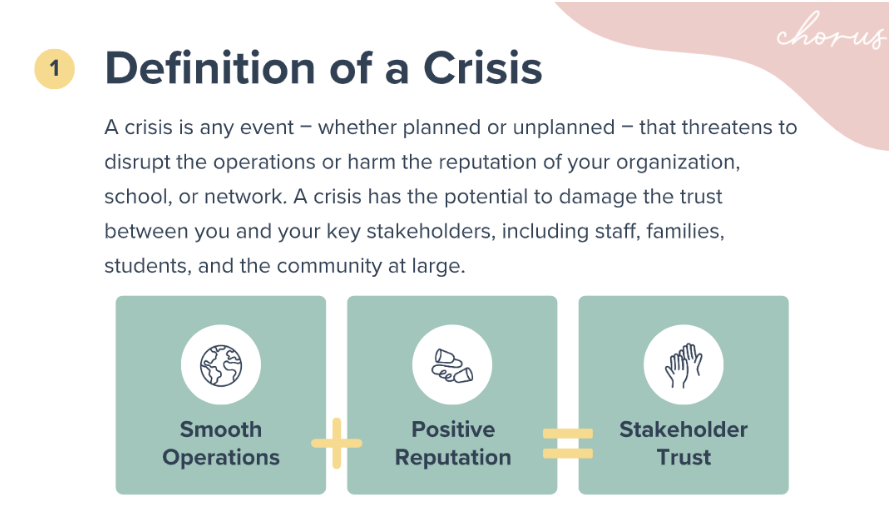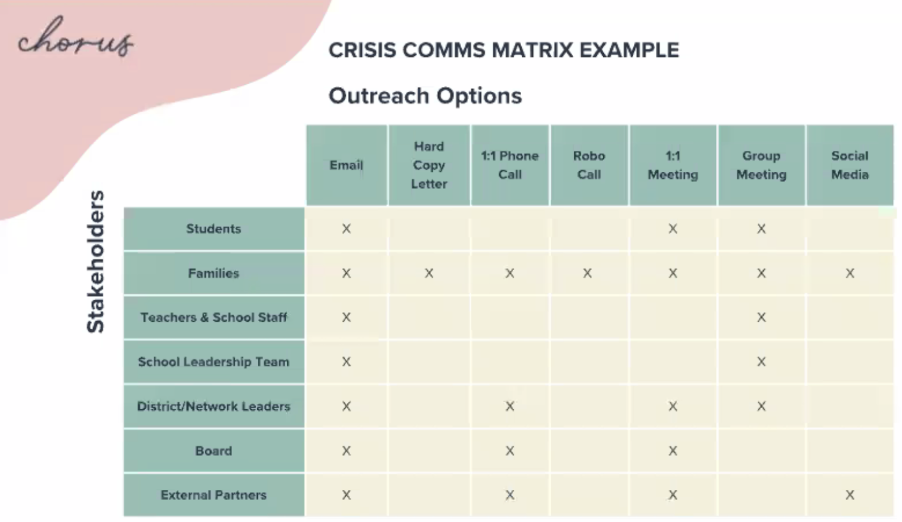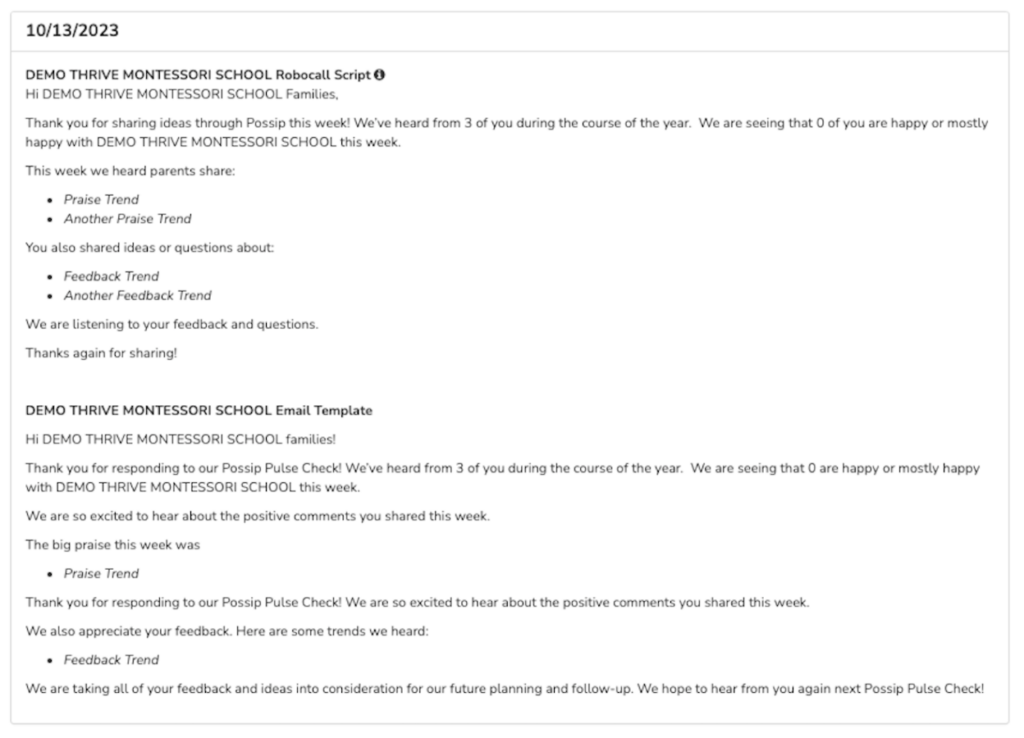We were thrilled to host a 50 minute webinar by Chorus, Creating a Crisis Communications Toolkit: How Advance Planning Can Safeguard Your School Culture! Below is a recap of the event. To watch the full recording and access slides, join our membership portal!
About Chorus
As a women-owned communications agency in Nashville, Chorus works exclusively with socially impactful organizations. Drawing from their Music City roots, the agency ensures that all members of a team are in harmony, much like a chorus. Co-founders Janel Lacy and Kelli Gauthier bring a wealth of experience—35 years combined—in journalism, government, and political campaigns, primarily serving nonprofits. Previously, Janel headed communications for a large urban school district, while Kelli led communications at a state department of education. Together at Chorus, they’ve helped many Chief Marketing Officers, nonprofits, and advocacy groups in education.
Identifying A Crisis and Your Guiding Principles
First, Janel and Kelli recommended an exercise to lead your leadership and communications team through to identify different types of crises and their level of severity.

Then, they laid out what to consider as guiding principles for responding to crises:
- Act Quickly
- Protect Your Credibility
- Own Mistakes
- Show Empathy
They walked through case studies and what they have seen go well and not so well.
Creating Crisis Protocols, Templates, and Tools
Janel and Kelli shared the benefits of creating templates in advance to prepare for different types of crises that you’ve identified. They recommended collecting any communications you have sent in response to previous events. Use them as a basis to create a template using the new framework outlined above.
Next, Kelli and Janel walked through examples of different levels of events, such as a lockdown at school. Using a this matrix, you can plan in advance the communications and messages you should prepare and

Note that media is not an audience and therefore is not in this stakeholder – it is the conduit to a stakeholder. You are speaking through the media to parents or your staff and the general public.
Managing Media
Build relationships ahead of time with local media representatives. Set clear guidelines for who within your school or district will engage with media and how. Remember that media is persistent – it can be more productive to respond to media to help build good will. Preparing a media statement will help you respond if and when you are contacted. Finally, monitor and correct misinformation.
Legal Considerations
Kelli walked through when to consult an attorney. Be aware of privacy laws and whether or not you have an attorney present, document all your processes and communications with timestamps to have a clear timeline of the event.
Post Crisis and Recovery
Kelli and Janel noted the importance of continual communication when any updates occur. Debrief after a crisis to determine what worked and what didn’t but don’t hide after a crisis.
The audience then asked specific questions to clarify and explore Kelli and Janel’s recommendations based on their knowledge and experience. Those questions included:
Before and During a Crisis
Q: Is it possible you have a baseline that you run through before the event, and then let that team know you’re implementing the protocol as it happens?
Q: How do you both move quickly and involve all of the different team members you need?
Q: Is a holding statement appropriate for internal stakeholder when there’s a quickly evolving crisis?
Q: How do you navigate privacy concerns that may be raised by those involved (especially if there is a victim in the situation) versus keeping the school community informed of important events?
Media
Q: Is media outside the [communications crisis] matrix, generally speaking?
Q: How do you develop relationships with media? If I have a crisis that needs to be reported (or I know they will want to report on) who do I call? Do I need to reach out to the startions? Or do they have a tip line?
Post Crisis
Q: If a school has failed to handle a crisis, what are the best steps to repair the trust with parents & the community?
The post Event Recap: Creating a Crisis Communications Toolkit appeared first on Possip.








 are a time-saver for schools, carefully developed after each Pulse Check®. Our reporting team tailors the scripts to the feedback gathered through Possip’s Pulse Check. Our scripts assist you in seamlessly communicating the report results to families or staff, whether through newsletters or robocalls. We keep the language in these scripts deliberately simple and anonymized. You can distribute them broadly, making sure that the key trends and insights effectively reach all stakeholders in a respectful and positive manner.
are a time-saver for schools, carefully developed after each Pulse Check®. Our reporting team tailors the scripts to the feedback gathered through Possip’s Pulse Check. Our scripts assist you in seamlessly communicating the report results to families or staff, whether through newsletters or robocalls. We keep the language in these scripts deliberately simple and anonymized. You can distribute them broadly, making sure that the key trends and insights effectively reach all stakeholders in a respectful and positive manner.

